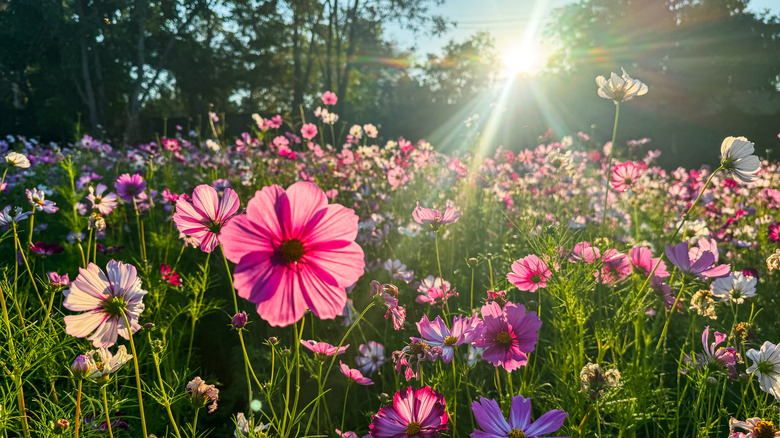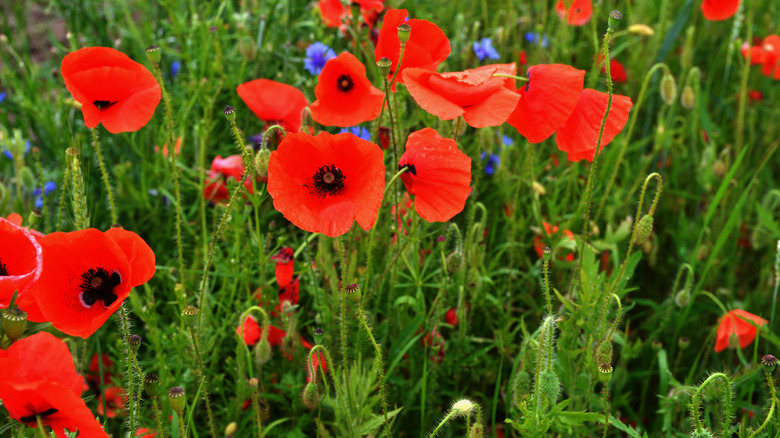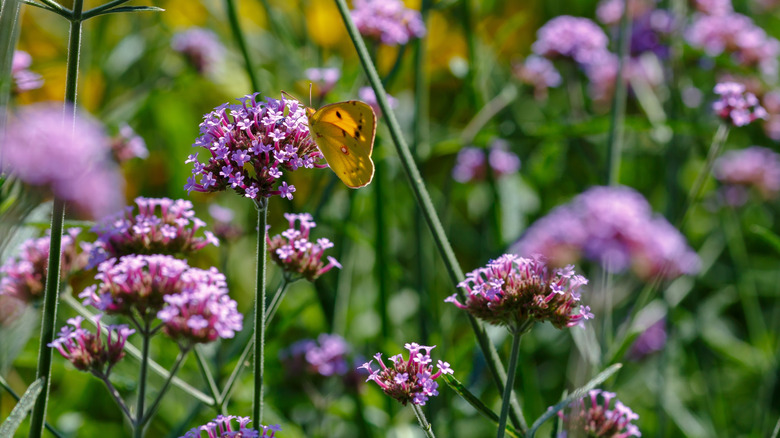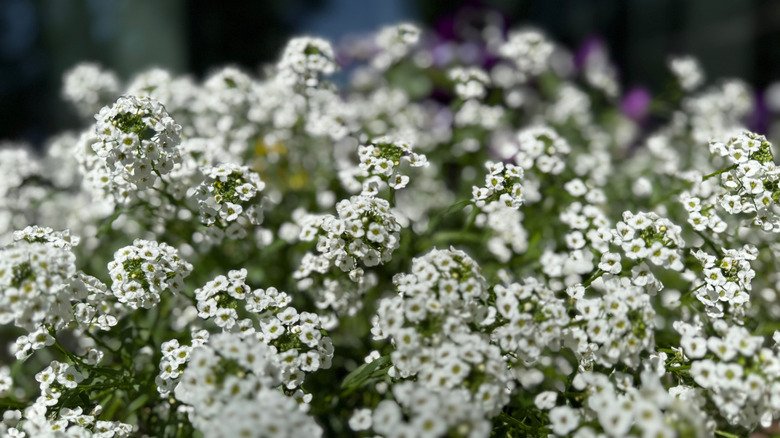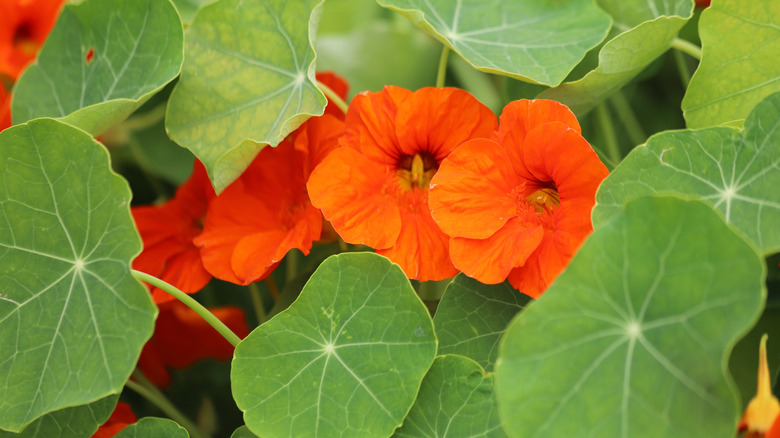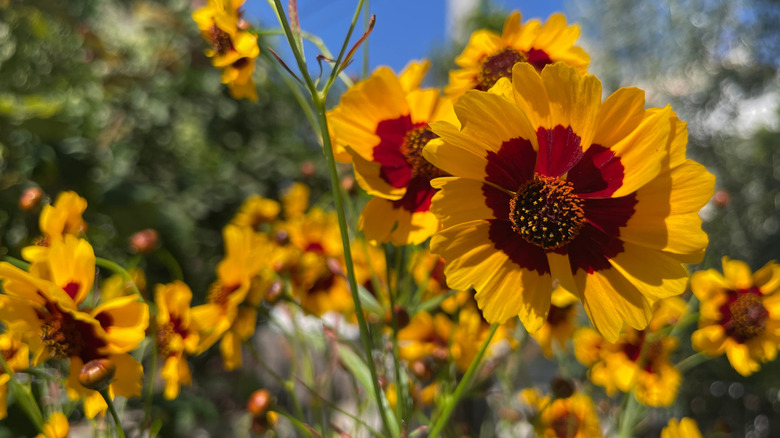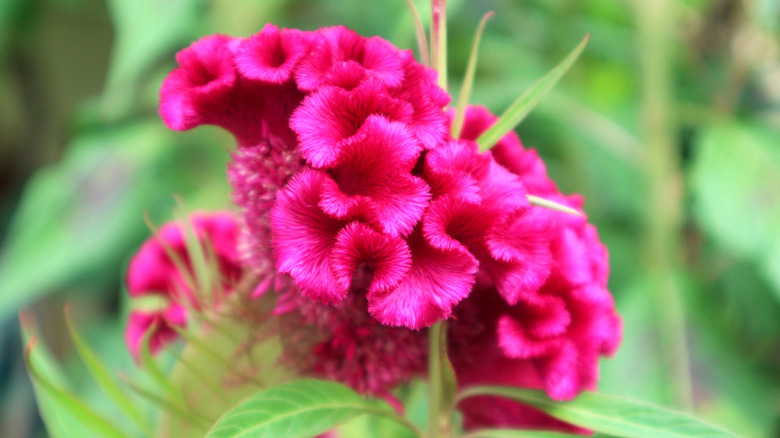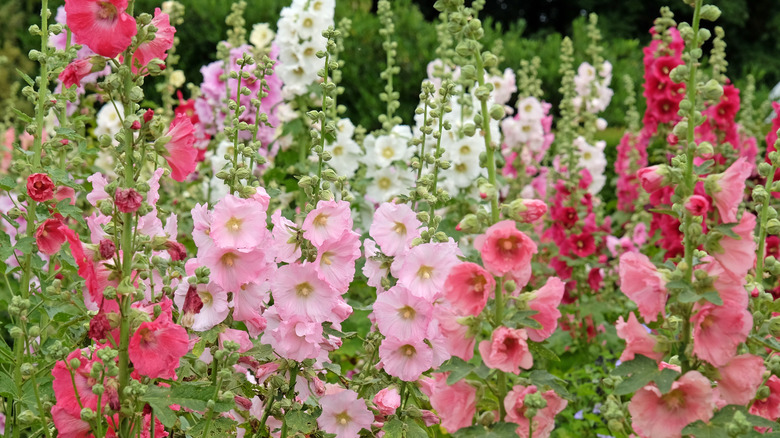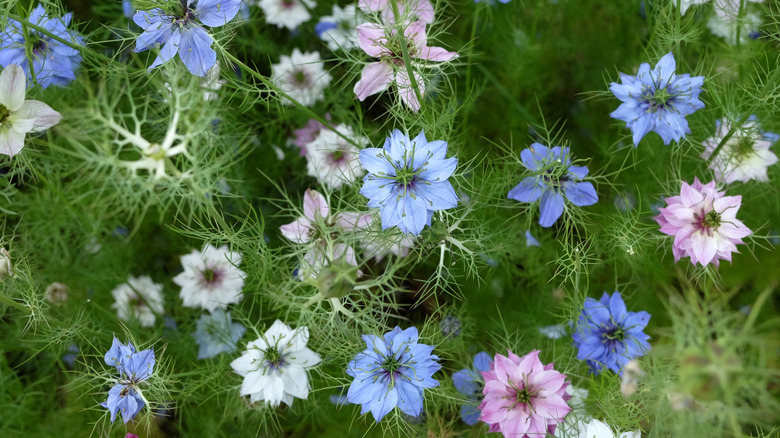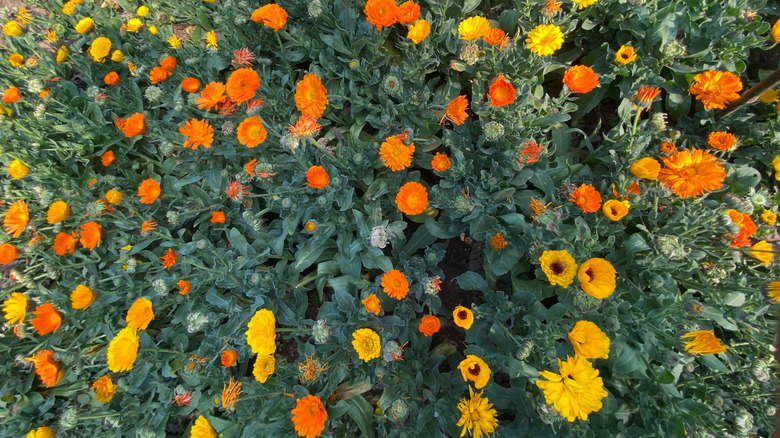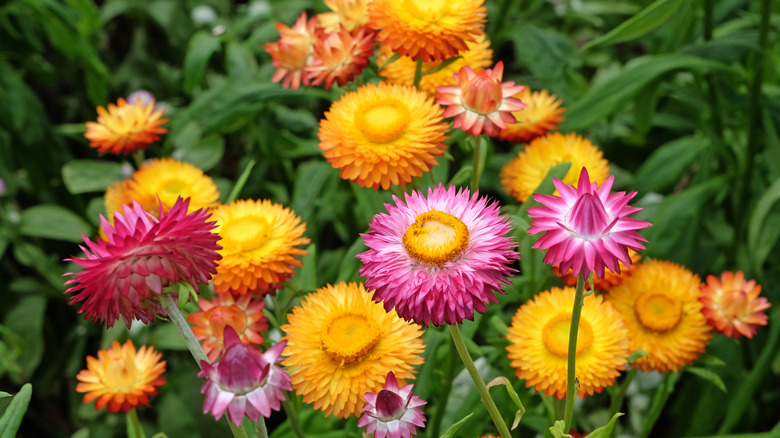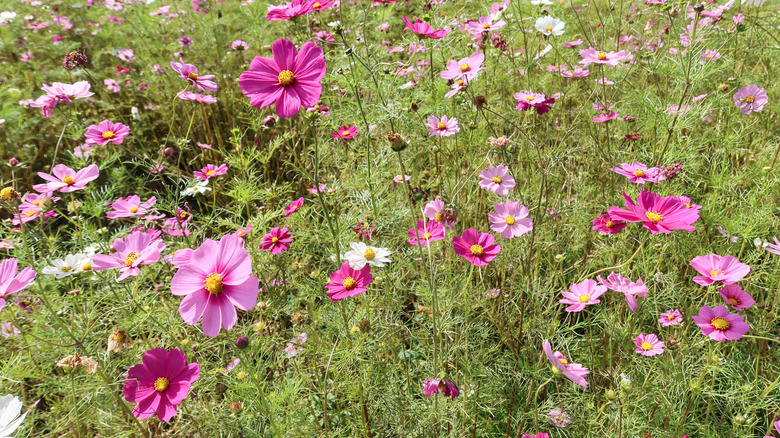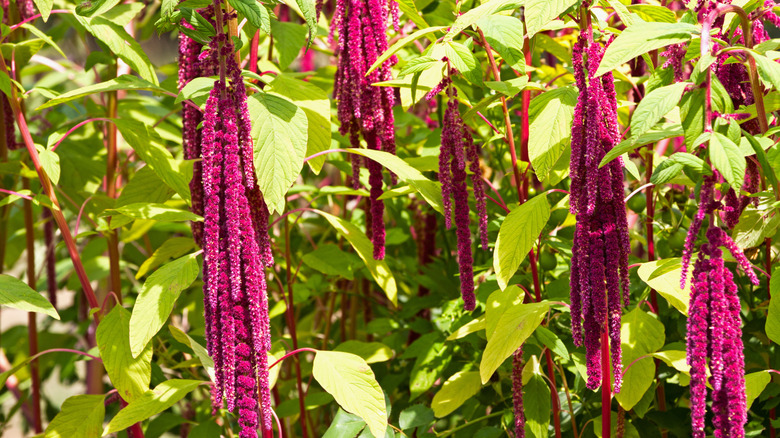Give A Garden A Colorful Boost With 12 Annual Flowers That Reseed Themselves Every Year
Perhaps the only thing better than a colorful flower garden is a colorful flower garden that comes back with minimal help every year. Unfortunately, not all perennials have the swift growth and vibrant blooms you might be craving for your yard. Additionally, many don't have a very long blooming season, so your enjoyment may be limited.
Luckily, there are a number of annuals that are polite enough to self-seed year after year — these plants drop the seeds for next year when they finish blooming in the current year, effectively functioning like perennials in your garden. Talk about significant savings of both time and money! Choosing self-sowers can also help to reduce your carbon footprint, as you will save a car trip to the store and reduce the number of plastic pots and pallets you use. Plus, over a few generations of dying off and reseeding, you may end up with hardier plants through the process of natural selection.
Corn poppies
Also known as Flanders or common poppies, corn poppies (Papaver rhoeas) are enthusiastic self-seeders that deliver a spark of vibrant red (or other color, depending on the cultivar) in your garden year after year. Corn poppies are considered hardy in USDA Zones 3 through 10, though they favor a cooler summer climate and can be vulnerable to drought. If you have an overabundance of corn poppies in your yard, consider cutting some for a floral arrangement inside your home — just make sure to burn the cut end with a match or lighter to help them last longer!
Tall verbena
Native to Argentina and Brazil, tall verbena (Verbena bonariensis) is hardy in zones 7 through 11, and sometimes zone 6. It can perennialize in very warm climates, but is also grown as an annual in cooler areas (this may actually be preferable, as it has been labeled invasive in certain southern areas of the U.S. — make sure to research your specific location). This herbaceous plant, which features vibrant clumps of purple flowers that seem to defy gravity atop tall, thin stems, is beloved by butterflies and hummingbirds, making it a good choice for a full-sun pollinator garden.
Alyssum
Alyssum (Lobularia maritima), a sweet-smelling member of the mustard family, can be started by seeding directly into the ground before the last frost; seedlings can also be started indoors a few weeks beforehand to give them a jump-start in spring. It forms thick mats of white flowers in the spring — sometimes flowering thickly enough to totally hide the foliage — with some varietals producing pink, purple, or other colored blooms. Alyssum is hardy in zones 5 through 9 and may be grown as an annual in cool climates or a perennial in warmer areas. Be mindful: It may be considered invasive in some areas.
Nasturtium
With their brilliant blooms, peltate leaves that resemble little umbrellas, and edible seeds (try using them in place of capers!), nasturtiums (Tropaeolum majus) might just be the total package. And to top it all off, they easily self-seed. These vibrant flowers — which come in shades ranging from orange to pink to cream — are hardy in zones 2 through 11 and can actually perennialize in zones 9 through 11. A variety of cultivars are available in bushy and climbing variations. Nasturtiums are fond of full sun and well-drained soil; they can grow in partial shade, but may have fewer blooms.
Plains coreopsis
Golden tickseed, plains coreopsis, calliopsis ... whatever name you use, Coreopsis tinctoria is a great choice for gardens in zones 2 through 11 that favor a riotous wildflower flair. It's a full-sun lover, tolerant of drought, heat, and poor soil — if there's a hard to water area where little else seems to thrive, plains coreopsis might be the perfect pinch hitter. You can start plains coreopsis via direct seeding or in flats. If you end up with more than you were anticipating, make sure to keep up with deadheading to control reseeding (deadheading also encourages more vigorous blooms!).
Crested cockscomb
A member of the amaranth family, crested cockscomb (Celosia argentea var. cristata) is a visually striking plant with distinctive fanlike, ruffled flowers that feel like velvet — and conveniently, a self-seeder. Crested cockscomb is considered hardy in zones 2 through 11, thrives in full sun, and can even tolerate a little drought (though, as a south Asia native, it prefers humid weather). You can sew the seeds directly after the last spring frost, or start seedlings 6-8 weeks in advance indoors if you're hoping for earlier flowers. If you want to control reseeding, be diligent about deadheading the flowers.
Hollyhock
Hollyhock (Alcea rosea) is a member of the hibiscus family (fun fact: this family also includes okra and cotton!). Hardy in zones 2 through 11, hollyhock will thrive in a wide variety of soils and, although it prefers sun, will tolerate partial shade. The spikes on which flowers bloom can grow 5-8 feet tall, and you can enjoy its flowering season from about June to August. A wide range of colors is available, including yellow, red, pink, and purple. Plant hollyhock seeds in August or September — they readily reseed themselves, so you can easily enjoy them year after year.
Love-in-a-mist
Another self-seeder that thrives in cooler weather, love-in-a-mist (Nigella damascena) draws its name from the fine, almost thread-like leaves that form the illusion of a floating "mist" around the solitary blue or purple blossoms. While the flowers are showy and attractive, even the seed pods that form once the blooms die off are visually pleasing — perfect for those who don't relish the chore of deadheading! Love-in-a-mist is suited to USDA Hardiness Zones 2 through 11 and favors full sun and well-drained soil. Because the blooming period is short, plant seeds in batches three weeks apart for blooms all summer.
Calendula
Often called pot marigold, English marigold, or Scotch marigold, calendula (Calendula officinalis) isn't actually a relative of the marigold, but a member of the daisy family. Throughout the long history of calendula in gardens, this plant has pulled double duty as a looker and a worker — the flowers and leaves are edible, and the blossoms can also be used to make a yellow dye. Some gardeners claim that it repels pests, as well. Calendula is hardy in USDA Zones 2 through 11 and will reseed itself. It can be sown after the last frost or started from seedlings.
Strawflower
Native to Australia, strawflower (Xerochrysum bracteatum) is a unique, colorful flowering plant with petals that feel similar to paper (or straw). Strawflower thrives in zones 8 through 10 and has a preference for well-drained soils that tend toward the drier side, making it ideal for rock gardens or window boxes. Keep in mind that not all cultivars will grow from seeds — those that do will reseed themselves in favored conditions. If you're fond of making dried flower arrangements, this might be the perfect choice for your garden: dry strawflower retains its shape and color particularly well.
Cosmos
Chances are, you've heard of this prolific self-seeder — cheery, colorful cosmos (Cosmos bipinnatus) are popular sun-loving annuals hardy in zones 2 through 11. Well loved by pollinators, cosmos is tolerant of drought and dry soil, though taller plants may need staking in windy areas. Planting cosmos couldn't be easier: after the last frost, just scatter seeds on the ground and rake them into the soil. Just make sure to locate your cosmos patch in an area where you're certain you want lots of cosmos; deadheading can reduce the amount of self-sowing that happens once blooms are spent.
Love-lies-bleeding
With a dramatic common name and even more dramatic red or gold tassel-like flowers, love-lies-bleeding (Amaranthus caudatus) is a Central and South American plant that favors zones 2 through 11. This plant is a prolific seed producer, ideal for low effort reseeding. Interestingly, not only are the seeds useful for sowing more beautiful flowers, they're edible and nutritious as well — you can even pop them like popcorn! Make sure to keep the soil moist if you want love-lies-bleeding to thrive, and consider using it in hanging baskets to really showcase its dangling flowers.
